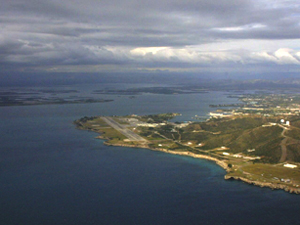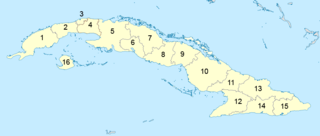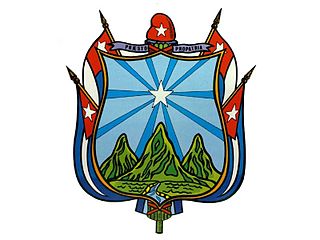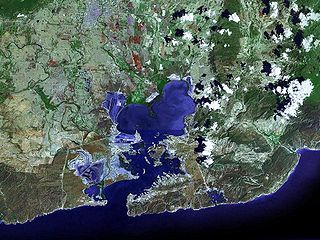This article includes a list of references, but its sources remain unclear because it has insufficient inline citations .(January 2015) (Learn how and when to remove this template message) |
| Cyathea × fagildei | |
|---|---|
| Scientific classification | |
| Kingdom: | Plantae |
| Division: | Pteridophyta |
| Class: | Pteridopsida |
| Order: | Cyatheales |
| Family: | Cyatheaceae |
| Genus: | Cyathea |
| Subgenus: | Cyathea |
| Section: | Alsophila |
| Species: | C. × fagildei |
| Binomial name | |
| Cyathea × fagildei (Caluff & Shelton) — | |
| Synonyms | |
| |
Cyathea × fagildei is a tree fern endemic to the Sierra de Moa and Sierra del Purial in Guantánamo Province, Cuba. It is a natural interspecific hybrid between Cyathea minor and Cyathea woodwardioides . The spores of C. × fagildei are normal in appearance; Caluff and Serrano (2002) suggest that it might therefore be fertile.

The order Cyatheales, which includes the tree ferns, is a taxonomic division of the fern class, Polypodiopsida. No clear morphological features characterize all of the Cyatheales, but DNA sequence data indicate the order is monophyletic. Some species in the Cyatheales have tree-like growth forms, but others have rhizomes.

Guantánamo is the easternmost province of Cuba. Its capital is also called Guantánamo. Other towns include Baracoa. The province has the only land border of the important U.S. Navy base at Guantánamo Bay.

Cuba, officially the Republic of Cuba, is a country comprising the island of Cuba as well as Isla de la Juventud and several minor archipelagos. Cuba is located in the northern Caribbean where the Caribbean Sea, Gulf of Mexico and Atlantic Ocean meet. It is east of the Yucatán Peninsula (Mexico), south of both the U.S. state of Florida and the Bahamas, west of Haiti and north of both Jamaica and the Cayman Islands. Havana is the largest city and capital; other major cities include Santiago de Cuba and Camagüey. The area of the Republic of Cuba is 110,860 square kilometres (42,800 sq mi). The island of Cuba is the largest island in Cuba and in the Caribbean, with an area of 105,006 square kilometres (40,543 sq mi), and the second-most populous after Hispaniola, with over 11 million inhabitants.
The type material was collected in the headwaters of Río Toa, reserve of Cupeyal del Norte, Guantánamo Province at an altitude of 500 m on August 27, 1986.

A holotype is a single physical example of an organism, known to have been used when the species was formally described. It is either the single such physical example or one of several such, but explicitly designated as the holotype. Under the International Code of Zoological Nomenclature (ICZN), a holotype is one of several kinds of name-bearing types. In the International Code of Nomenclature for algae, fungi, and plants (ICN) and ICZN the definitions of types are similar in intent but not identical in terminology or underlying concept.











